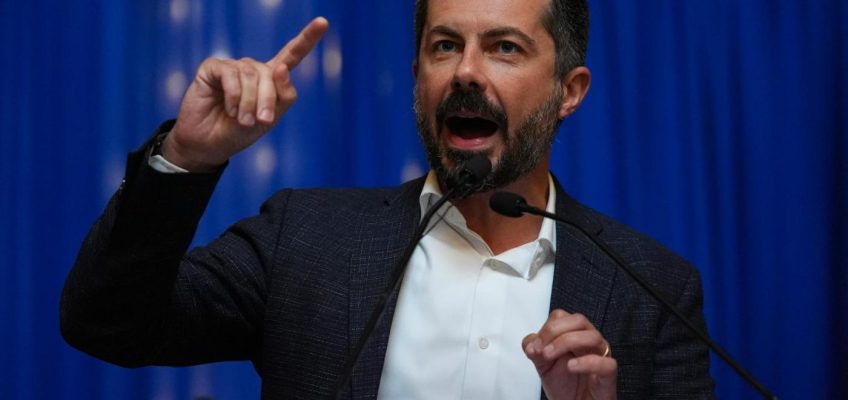‘In my opinion …’
In light of the horrid assassination of Charlie Kirk, and, unfortunately, similar murders in the past few years, the after cry is always “tone down the rhetoric.” Easier said than done, but perhaps not if we go to a speech pattern used by President Dwight D. Eisenhower.
So often President Eisenhower prefaced his remarks with “in my opinion.” As a young person I used to wonder why he would weaken his argument in this way, but as I grew older and knew a little bit more about life, I began to realize that phrase was absolute genius on his part.
He was commander of the Allied Forces and he had to work with some very large egos, DeGaulle and Montgomery come to mind. When you say “in my opinion.” the idea is right where it belongs, with you, and it opens a respectful dialogue.
I suggest we all go to our mirrors and repeat 10 times a day until it becomes a habit, “in my opinion.” Likewise on social media, it should be a default prefix on all posts. Sometimes making little changes can lead to big results.
Rhea Sherburne Nyquist, West St. Paul
A model for civil discourse
One lesson left behind by Charlie Kirk that Americans of all political beliefs should duplicate and embrace are the open-house dialogue and debate sessions that he held on college campuses across the country.
Anyone can watch these debate sessions on YouTube and see how courteous and respectful these debates were. Charlie had a big sign at these gatherings that read “prove me wrong,” and he encouraged students with opposing views to debate him.
I hope that our young people follow this open-dialogue model for civil discourse instead of the shouting and disrespectful antics seen on TV and created by their parents’ generation.
Corby Pelto, Minneapolis
Anger only incites more anger
I am writing about a recent column written by Thomas Friedman, “A plea for President Trump with a fragile country on the edge.”
I could not agree more with the premise that all top leaders of both parties must come together, not as Democrats or Republicans, liberals or conservatives; but as Americans, to stop the political violence rocking this country.
Enough of the labeling and blaming “far left” because the violence comes from both sides. Anger and blame from top leadership only incites more anger, violence and divisions.
Nancy Nichols, Oak Park Heights
Encouraging dissent
Those who say Charlie Kirk was a Fascist and a Nazi show their intolerant ignorance. Fascists and Nazis abhor dissent. Charlie Kirk was just the opposite — he encouraged and welcomed dissent. Shame on those who find joy in his death.
Donald Theissen, Woodbury
Blame on the political scoreboard
In the aftermath of Charlie Kirk’s assassination, his friend, Vice President JD Vance, claims he wants “unity,” yet in the same breath warns of the rise in “leftist” violence. The Hortmans were assassinated by a right-wing conservative earlier this summer. JD Vance does not want unity; he wants blame to be prominently displayed on a political scoreboard. Couldn’t he just warn of the rise in political violence if he wanted to bring unity?
Ryan McCabe, St. Paul
A long line of needless tragedies
The assassination of Charlie Kirk was a brutal and savage act but is just one chapter in a long line of needless tragedies and a symptom of a much greater loss. That loss is the compound loss of widely held values of civility, of human decency, of respect for the opinions of others, of Judeo-Christian morality, of the sanctity of human life, of public decorum and love for our country. Charlie’s “sin” was to fight vigorously, with the weapon of his words, to save and restore these values, and for that “sin” a courageous and noble man was slain. And we all died a bit with Charlie, lowering us ever deeper into a depraved and debased culture, ever closer to the threat voiced by Ben Franklin, who, when asked after the Constitutional Convention “what form of government has been created?”, stated “a republic, if you can keep it”.
It is, and has been, disgusting to hear many prominent senators and representatives, political candidates and entertainment personalities speak publicly, with an obviously coordinated political strategy employing the foulest and most vulgar language possible on multiple occasions, to express their hatred for President Trump. We hear politicians urging us to “fight harder”, to “get in their face”, to “be more aggressive”, to “harass them in restaurants and other public places”. One washed-up entertainer spoke of “blowing up the White House” when George Bush was president, another of cutting out Bush’s heart, and of course we have had attempts on the life of President Trump. We even heard a call for silent prayer for Charlie and his family loudly shouted down in the U.S. House chamber. We hear ad-hominem attacks on those who dare to hold opposing views, but seldom do we hear cordial and meaningful debate on controversial issues, as we routinely heard from Charlie. Let’s debate the merits of socialism and capitalism, open borders, abortion, transgender rights and therapies, of deficit spending, of tariffs and taxes, and do so civilly. We can learn from each other only when we share information and opinion.
Yes, there has been inexcusable violence from right wing extremists as well as from the left, and there has been uncivil mockery of left wing policies as there was of President Biden, but what you haven’t heard from the right is direct calls for violence as we hear routinely from the leaders on the left (and let me be clear that it is the leaders fomenting this hatred of the opposition. I am confident that rank-and-file liberals truly want what is best the country and for all of us).
In conclusion, there is fault on both sides, and both sides have spoken often of the “threat to democracy” posed by the other party. I ask what could be a greater threat to democracy than the murder of those with whom we disagree?
Charlie Kirk knew the answers to those problems noted above, as did the French philosopher Alexis de Tocqueville, who said “Liberty cannot be established without morality, nor morality without faith.” Let us heed those words, all of us together, with the courage and spirit of Charlie Kirk.
Richard Powell, Owatonna
An oasis of oaks and fond memories
I happened by Newell Park recently, and it rekindled fond memories.
There, in the1950s, a small St. Paul business named Lincoln Equipment, now gone, held its annual company picnic in late August for workers and their families. Within earshot of the Minnesota State Fair, I remember hearing screams from the midway and roaring race cars, now gone, circling inside the Grandstand. All acoustic ambience enhancing our gunnysack races, tug-of-war, unlimited hotdogs, etc. that day.
I remember the coldness of repeatedly dipping my hands into the huge trough of ice water until I found an ever-precious bottle of grape pop.
I remember the men, Bob (my dad), Vern, Ray, Don, Ken, Fran and more, now gone, and how they patiently allowed me to join in their softball game.
And the treasure hunt amidst the gently rolling hills adorned with green grass and acorns from the many ornate oak trees, now with enormous ankle-drooping limbs. And how the majesty of this gnarled art shaded those below at the famous horseshoe pits, now gone, site of the climactic event – the men’s horseshoe tournament. The women seemed to enjoy this as much as the men, based on their cheers and playful heckling. No one seemed to mind the attention toward the men, perhaps because a decade earlier these same men battled as boys in World War II.
Anyway, thank you, St. Paul Parks and Recreation, for preserving Newell Park, a true oasis of oaks – not gone!
James R. Carey, Little Canada




